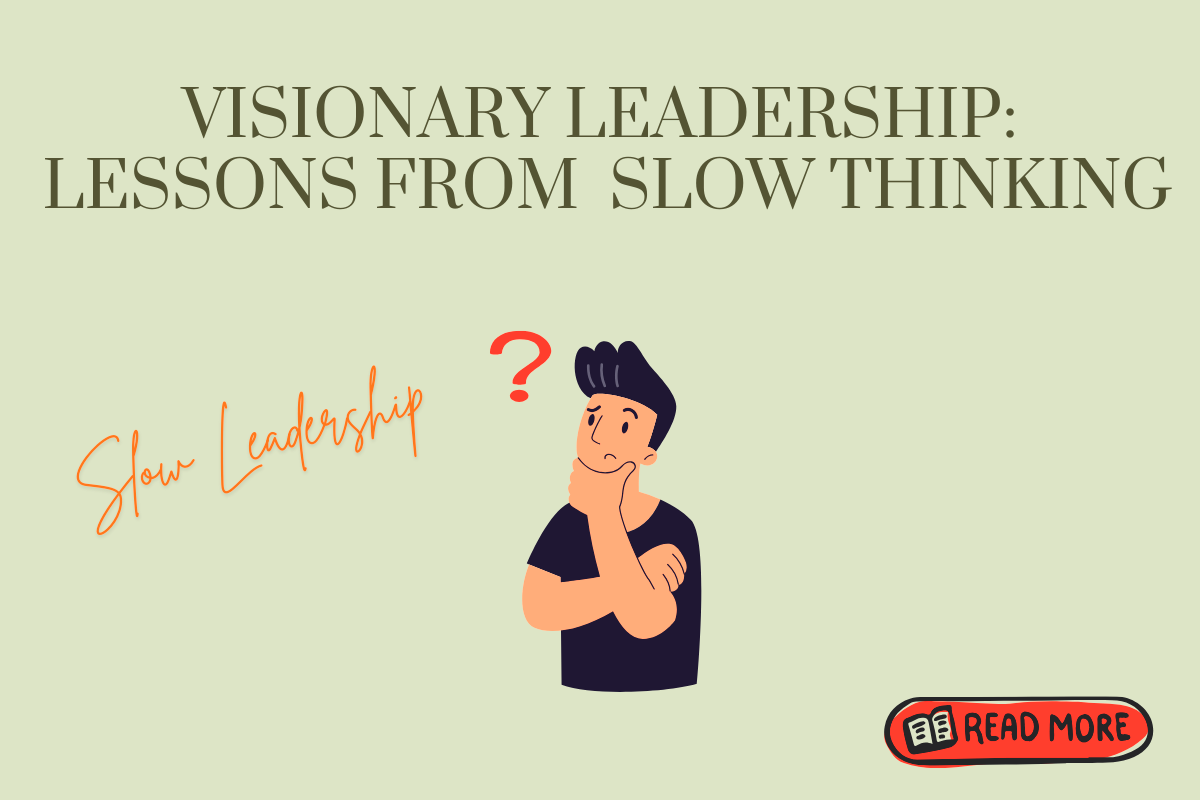Leading with Simplicity 1.14 – The Power of Slow Leadership
How Pacing Yourself Unlocks Sustainable Success and Growth

🖋️ What if slowing down, not speeding up, was the key to ensuring sustainable leadership success? Imagine standing at the helm of a fast-moving ship in a stormy sea, bombarded by waves of decisions, challenges, and expectations. Many leaders thrive on speed, but for how long?
In our last installment, 1.13 – Leadership in Stillness: Harnessing Solitude for Creative Breakthroughs 📚, we explored how purposeful solitude can unlock clarity and creativity in leadership. Today, we shift to another underappreciated principle: the power of slowing down.
Our culture glorifies speed ⏱️, equating busyness with success. Yet, in leadership, a relentless pace can obscure vision, burn out teams, and undermine long-term goals. “Slow leadership” offers a pace-conscious approach, emphasizing clarity, sustainability, and thoughtful decision-making over quick wins. By adopting this practice, leaders can reflect deeply, foster stronger connections, and achieve lasting impact.
This article reimagines leadership through the lens of intentionality, exploring how slowing down empowers leaders to thrive in today’s fast-paced world.
1. Redefining Leadership in a World Obsessed with Speed
🔹 Why Leaders Feel the Pressure to Go Fast
Modern technology and 24/7 connectivity create a constant sense of urgency. Leaders face the pressure to act quickly, lest they risk feeling irrelevant. Yet this relentless pace often leads to shallow decision-making, burnout, and reduced creativity.
🔹The Philosophy of Slow Leadership
Slow leadership emphasizes intentionality over haste, akin to the “slow food movement,” which values quality over speed. It’s not about doing less; it’s about doing the right things better. Leaders who slow down gain the ability to focus on what matters most, fostering resilience and balance.
🔹 Case Study:
Cal Newport, a computer science professor and author of Deep Work, has long advocated for a slower, more deliberate approach to productivity. By emphasizing focus and eliminating distractions, Newport demonstrates how leaders can reclaim intentionality in their work. His principles of deep work and intentional scheduling align perfectly with slow leadership, fostering a culture of thoughtful, high-impact decision-making.
2. The Benefits of Slow Leadership
🔹 Clarity Over Chaos
Slowing down allows leaders to cut through the noise and approach challenges with clear-headed strategy. Reflective thinking not only reduces reactive decision-making but also fosters innovative problem-solving.
🔹 Deeper Connections with Teams
Slow leadership enables authentic communication. By taking the time to listen actively, leaders strengthen trust and collaboration.
Example:
Rasmus Hougaard, founder of the Potential Project, emphasizes mindfulness and reflection as core leadership traits. By integrating these practices, he helps leaders foster inclusivity, empathy, and innovation, creating organizational cultures that prioritize thoughtful decision-making and long-term success.
🔹 Long-Term Sustainability
Fast decisions may yield quick wins but often sacrifice long-term success. Slow leaders prioritize durable strategies, building organizations that withstand challenges and adapt over time.
Example:
Paul Polman’s leadership at Unilever exemplifies this approach. By embedding sustainability into the company’s core strategy, he prioritized long-term value creation and resilience over immediate gains.
3. Practical Strategies for Slow Leadership
1. Prioritize Thinking Time
Dedicate time for reflection through journaling, quiet mornings, or solo walks. Leaders like Rasmus Hougaard advocate for integrating mindfulness into daily routines, emphasizing how quiet reflection fosters clarity and innovation. Alternatively, consider Jochen Zeitz, whose retreats into nature inspire strategic thinking and creativity.
2. Practice Intentional Delegation
Empower teams by delegating strategically. This creates space for leaders to focus on high-value decisions and reflection. Ask yourself, “What can I delegate today to create space for deeper thinking?”
3. Lead with Presence
Be fully present in conversations and meetings. Mindfulness practices, like pausing for a few meditative moments, help leaders stay grounded and focused.
4. Set the Tone for Your Team
Model slow leadership by encouraging intentional work and celebrating progress over perfection.
Example:
As discussed in Leading with Simplicity 1.11, Patagonia’s founder Yvon Chouinard exemplifies purpose-driven leadership. By fostering a values-centered workplace culture, he demonstrates how intentionality and long-term thinking can drive both sustainability and success.
4. Challenges to Slow Leadership and How to Overcome Them
🔹Fear of Falling Behind
Leaders often worry that slowing down may result in missed opportunities. In reality, thoughtful pacing unlocks innovation and focus, minimizing wasted energy and maintaining clarity.
➜ Tip: Balance urgent tasks with reflective practices by scheduling blocks of uninterrupted thinking time.
🔹 External Pushback
Organizations conditioned for speed may resist slow leadership. Begin with small cultural shifts that demonstrate the benefits of intentionality.
🔹 Discomfort in Stillness
In a world accustomed to speed, patience can feel uncomfortable. Embrace this discomfort as a sign of meaningful growth.
🤔 Deep Reflection
Success in leadership is not about sprinting to the finish line; it’s a marathon of sustainable growth and thoughtful action. Slow leadership defies modern norms but fosters clarity, resilience, and lasting impact. By stepping back, pacing yourself, and building intentional habits, you unlock your greatest potential as a leader.
Slow is not weak; slow is strategic. And sometimes, stepping back is the clearest path forward.
What’s Next?
How has slowing down impacted your leadership journey? Share your thoughts; I value your insights and look forward to engaging with you.
👉 Subscribe to my Substack profile to stay updated on every new post. Together, we’ll continue exploring the principles of simplicity and thoughtful leadership. To be continued…


